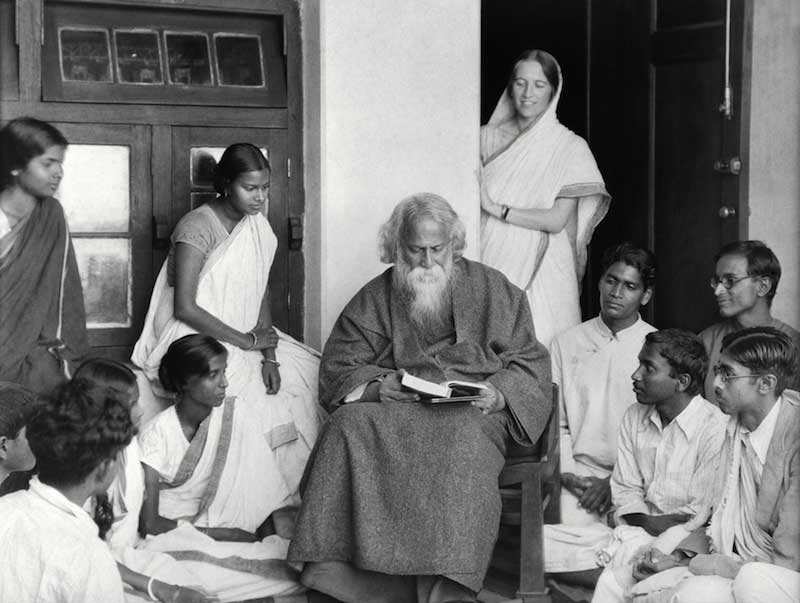‘Monishar pathorer bon’: a novel way to introduce scientific thinking in village communities. ‘Gatchpathor’ or ‘wooden stone’ is a common curiosity in many parts of Bengal. In appearance and texture gatchpathor looks like wood, but one touch reveals that it is actually made of stone! How did it form? Many explanations for its origin exist in Bengali folklore but the story that science tells is even more wonderful and mysterious. And each person can discover the science-based story for themselves by looking carefully and thinking clearly about everyday things that we see around us. This story was produced by an international group of scientists and artists, all linked to Santiniketan, and is being published in association with the Geological Society of India. It is sponsored by three international geological societies including the Paleontological Society, the Palaeontological Association, and the Geological Society of London, and its distribution is being facilitated by the Pratichi Trust. The book is offered in memory of Santiniketan artist and activist Shyamali Khastgir. It was written by Nigel Hughes, professor of geology at the University of California and Santiniketan ex-student and illustrated by Rati Basu, an art teacher at Patha Bhavana, Santiniketan and translated by Dipen Bhattacharya, a professor of physics and astronomy in the Riverside College District. Copies of the book will be distributed freely during educational programmes at local schools, NGO’s and science organizations in Birbhum in August 2012.
104 pages, 1st Edition
ISBN: Price in India: INR 120.00
Source: Monishar Pathorer Bon :: Nigel Hughes – Monfakira
Address : http://monfakira.com/monishar-pathorer-bon/
Date Visited: Fri Sep 06 2013 15:46:32 GMT+0200 (CEST)
Learn more about Santiniketan artist and activist Shyamali Khastgir >>

“The highest education is that which does not merely give us information but makes our life in harmony with all existence.” – Rabindranath Tagore | Rabindranath Tagore: a universal voice – Unesco >>
“Society as such has no ulterior purpose. It is an end in itself. It is a spontaneous self- expression of man as a social being. It is natural regulation of human relationships, so that men can develop ideals of life in cooperation with one another.” – Rabindranath Tagore quoted in Santiniketan: Birth of Another Cultural Space by Pulak Dutta (Santiniketan, 2015) p. 42 [from The English Writings of Rabindranath Tagore, Vol. II, Sahitya Akademi, New Delhi, 2004, p. 421]
“The smart boy or clever girl who is deprived of the opportunity of schooling, or who goes to a school with dismal facilities (not to mention the high incidence of absentee teachers), not only loses the opportunities he or she could have had, but also adds to the massive waste of talent that is a characteristic of the life of our country.” – Nobel Awardee Amartya Sen in The Argumentative Indian (Penguin Books, 2005), p. 344 | Find this and other books published in India >>
Related: Tribal Children’s Right to Education | Childhood | Ekalavya (Eklavya, Eklabya), EMR & Factory schools | Childrens rights: UNICEF India >>
See also
eBook | Free catalogue: Museum of Santal Culture (Bishnubati)
eBook | Free catalogue: Banam: One of the ancient musical instruments of the Santals
Santal | Santali language | Santali script – Ol Chiki
The Santhal family and the invention of a subaltern counterpublic